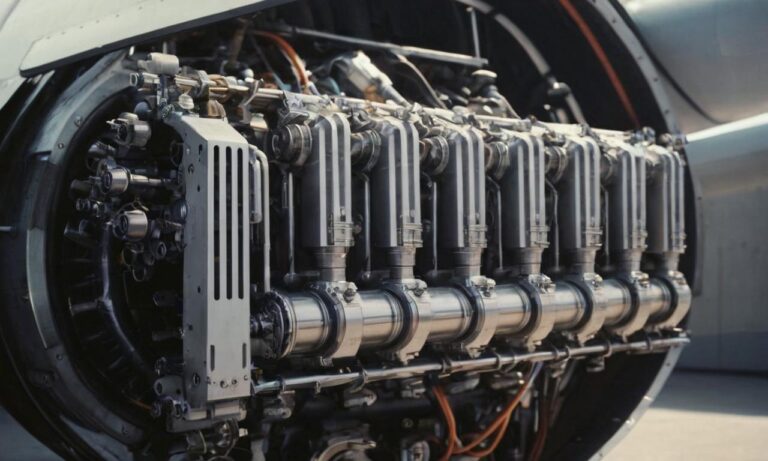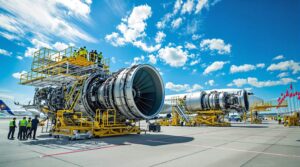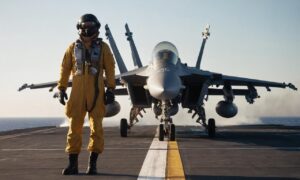Exploring the intricate mechanisms that power aircraft, we delve into the heart of aviation marvels – the piston engine. A crucial component of many propeller-driven airplanes, the piston engine plays a vital role in the aerodynamic symphony of flight.
The Basics of Piston Engines
At its core, a piston engine operates on the principles of internal combustion. This means that fuel and air are mixed, ignited, and the resulting explosion drives a piston, converting linear motion into rotary motion that propels the aircraft forward.
Combustion Process
The combustion process begins as the engine draws in air, which mixes with fuel in the carburetor. This mixture is then compressed in the cylinder before being ignited by a spark plug. The ensuing explosion forces the piston downward, turning the crankshaft and generating power.
Four-Stroke Cycle
Piston engines typically follow a four-stroke cycle: intake, compression, power, and exhaust. During the intake stroke, the piston moves down, drawing in the air-fuel mixture. The compression stroke follows, squeezing the mixture. Ignition and combustion occur during the power stroke, and finally, the exhaust stroke expels the burnt gases.
Components of a Piston Engine
Understanding the anatomy of a piston engine is crucial to grasp its functioning. Key components include cylinders, pistons, a crankshaft, and a camshaft. The crankshaft transforms the reciprocating motion of the pistons into rotational motion, while the camshaft controls the opening and closing of valves.
Valvetrain Mechanism
The valvetrain, consisting of valves, pushrods, and rocker arms, regulates the flow of air and fuel. Intake and exhaust valves open and close at precise intervals, ensuring optimal engine performance and efficiency.
Applications in Aircraft
Piston engines find their place in various aircraft, from small general aviation planes to vintage warbirds. Their reliability, simplicity, and ease of maintenance make them a preferred choice for certain aviation enthusiasts and operators.
Advantages and Limitations
While piston engines offer advantages such as lower operating costs and fuel efficiency, they may lack the sheer power and speed capabilities of turbine engines. Understanding these trade-offs is essential for selecting the right engine for specific aircraft and missions.
In the vast realm of aviation, the piston engine stands as a testament to engineering ingenuity. From the rhythmic dance of its internal components to the symphony of flight it facilitates, the piston engine continues to be a driving force in the skies.
Enhancing Piston Engine Performance
As technology advances, efforts are continually made to enhance the performance of piston engines. Innovations in materials, design, and manufacturing processes contribute to increased power, efficiency, and reliability.
Advanced Materials
Researchers explore the use of advanced materials in piston engines, such as lightweight alloys and composites. These materials not only reduce overall weight but also improve heat dissipation, allowing engines to operate more efficiently at higher temperatures.
Fuel Injection Systems
Modernizing piston engines involves incorporating sophisticated fuel injection systems. Unlike traditional carburetors, fuel injection systems precisely control the amount and timing of fuel delivery, optimizing combustion and overall engine performance.
| Enhancement | Benefits |
|---|---|
| Electronic Ignition Systems | Improved ignition timing for enhanced fuel efficiency and smoother operation. |
| Aerodynamic Engine Design | Streamlined shapes and improved airflow contribute to better overall performance. |
Frequently Asked Questions
-
Q: Are piston engines only used in smaller aircraft?
A: While common in smaller planes, piston engines are also found in larger general aviation and vintage military aircraft.
-
Q: How do piston engines compare to turbine engines?
A: Piston engines offer cost advantages and fuel efficiency but may lack the power and speed of turbine engines.
-
Q: What is the typical lifespan of a piston engine?
A: With proper maintenance, piston engines can last for thousands of flight hours, but individual experiences may vary.
Future Trends in Piston Aviation
Looking ahead, the aviation industry anticipates further advancements in piston engine technology. Sustainable fuels, improved aerodynamics, and increased automation are among the trends shaping the future of piston-powered flight.
Sustainable Aviation Fuels
With a growing focus on environmental sustainability, researchers explore the use of alternative fuels in piston engines. Sustainable aviation fuels derived from renewable sources aim to reduce the carbon footprint of aviation operations.
Automation and Avionics Integration
The integration of advanced avionics and automation systems into piston aircraft enhances safety and ease of operation. Pilots can benefit from features such as autopilot systems, electronic engine monitoring, and advanced navigation aids.






